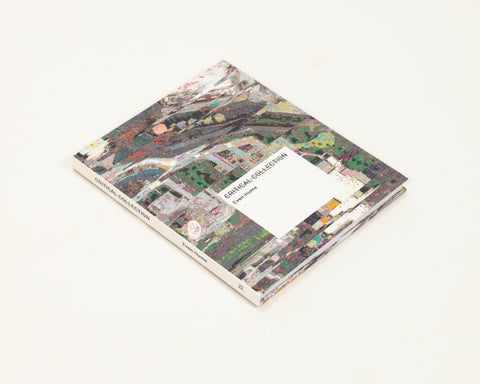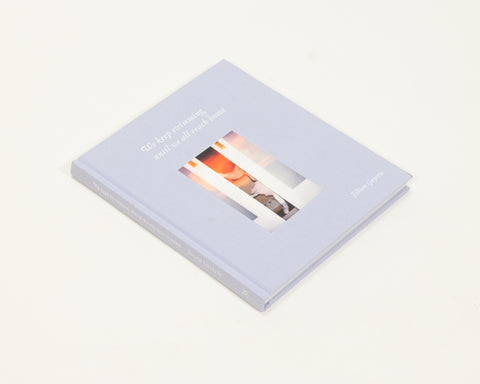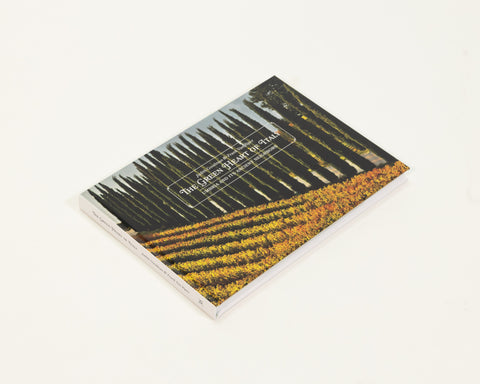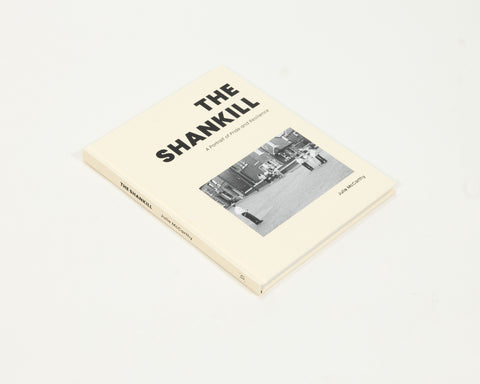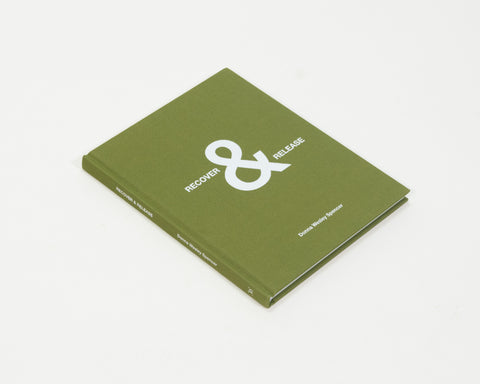Considering its themes--the ethnographic gaze, colonialist knowledge/power systems, the ineluctable battle between culture and nature--Lothar Baumgarten's show at Marian Goodman Gallery would seem to have no right to be beautiful. Almost as a rule, when one confronts this kind of exhibition it is wise to gird oneself against a coming onslaught of boring work bolstered by dry, grinding pedantry or (worse) boring work justified by way of obfuscatory warblings lifted from a litany of fashionable "post-"s (structuralism, modernism, colonialism, feminism, etc.). Nevertheless, Baumgarten's show is subtle, considered, and ravishing.
For those viewers who are familiar with Baumgarten's practice, of course, this comes as no surprise. He has been producing insightful, often gorgeous work addressing colonialism and post-colonialism, Western perceptions of the Other, and the devastation and disappearance of tribal cultures (particularly those in North and South America) since the 1960s. But familiarity with past practice proved inessential to the viewing of this show, as its two centerpiece works, The Origin of Table Manners (1971) and Fragmento Brazil (1977-2005), provided a quick (if incomplete) history lesson.

One of Baumgarten's early works, The Origin of Table Manners is a wry illustration of the way in which colonial conquerors conflated Western notions of civility with notions of the civilized as part of their alibi for domination. Inspired by a text of the same name by the structuralist anthropologist Claude Levi-Strauss, the work consists of a table draped in a crisp, white tablecloth and set with fine china, with porcupine quills and the feathers of large birds standing in for silverware. When it was first shown, it was installed in a tony French restaurant near Baumgarten's Paris gallery. The work certainly survives its transplantation into the gallery space, but one can only imagine, ruefully, that this original outing really knocked some socks off. Regardless, the work's main function in the show is to work in tandem with the more recently realized Fragmento Brazil, which looks at the role that cultural disparities played in colonialist domination through a slightly different lens.
Like The Origin of Table Manners, Fragmento Brazil is a kind of relic from Baumgarten's artistic past, but of a different sort. The work is made up of numerous slide projections that cycle through over five hundred images culled from points in Baumgarten's career stretching back over the past thirty years. Some of the images are black and white landscapes that Baumgarten took on a five-month walk across the Rio Caroni, Rio Uraricuera and Rio Branco regions in Venezuela and Brazil in 1977. For the most part, though, the slide images were taken from two sources, which are juxtaposed in diptychs: On the one hand, there are details from Albert Eckhout's mid-17th century paintings of Brazilian birds, which were produced in Holland after his return from a lengthy tour of the Brazilian colonies. Removed from the birds' indigenous landscape by a distance spanning oceans, Eckhout choose, strangely and, Baumgarten implies, tellingly, to paint these vibrant specimens against Dutch, rather than Brazilian, landscapes. On the other hand, there are details of drawings made by Yãnomãmi people of Venezuela and Brazil, who Baumgarten lived with for eighteen months from 1978-1980. According to Baumgarten, before his arrival the Yãnomãmi had never before used, or even seen, paper of the kind on which the drawings were ultimately rendered. As a result, the drawings might be more accurately described as transcriptions--transfers of the decorative markings used in the everyday life of the tribe onto a foreign medium.

What is most immediately striking about these pairings is the way in which the markings made by Yãnomãmi seem (admittedly, in some cases more than others) to imitate the markings on the birds in Eckhout's paintings. This could, perhaps, be billed as a minor anthropological discovery on Baumgarten's part, but what is most interesting is the way he allows the disparities between these two systems of representation to speak to their corresponding attitudes toward nature. This is not to say that the fundamental argument being presented is novel. The idea that the West tends to dominate the natural though the imposition of rational systems (such as taxonomy) that provide an illusion of control and, by extension, an alibi for destruction, while those cultures that adhere to alternate systems of thought tend to view the natural as inextricable from the warp and woof of existence, is an old one. However, this is beside the point. The reason that Baumgarten's work succeeds where comparable works fail is that Fragmento Brazil does not fall prey to the self-negating trap of the illustrative that entangles lesser work. Instead, Baumgarten allows space for the rich ambiguity of the visual, making sure that conceptual understanding, once reached, does not render the visual element tautological. And, it should be said, you don't have to be an expert in the field of conceptual art to know that this is a somewhat rare achievement.
The rest of the exhibition continues Baumgarten's investigation of the fraught relationship between nature and culture, though outside of the environs of South America. His series of photographs made in Serralves Park in Porto, Portugal from 2003-2006, collectively titled Concordance, begs to be read as an investigation of the spurious claims that manicured and stewarded park spaces have on the natural (the suggestion being that that the "concordance" between the natural as it is presented to us within the space of the park and as it exists elsewhere is largely an illusory one). Regardless of whether or not this interpretation is congruous with Baumgarten's intent, the photographs can be appreciated for their elegant understatement, which speaks of nature not in the sublime register of the vista, but in the quiet voice of the close-up, incidental view. (This is, perhaps, not insignificant as the vista painting was an artistic trope used by colonial conquerors to denote mastery and ownership.)

This quiet, humble regard of nature continues into the show's final piece, Matteawan / Fishkill Creek (2004-2008). The work is an eighty-minute sound recording made over the course of a single night in April 2007 at Denning's Point, a peninsula that juts into the Hudson River near the Southernmost boarder of Beacon, New York. Derived from previous and identically titled series of site-specific sound works that Baumgarten installed on the heavily wooded peninsula, this incarnation provides gallery-goers with a cool, dark, pillow-strewn sanctuary from the urban bedlam four floors below. Ensconced in these welcoming environs, you can contemplate the symphonic ebb and flow of nature's night sounds, punctured only occasionally by the distant clatter of human life.
It could be argued that, in and of itself, Matteawan / Fishkill Creek is little more than an elaborately conceived equivalent of those CDs of natural sounds designed to sooth the frazzled modern mind into some semblance of sleep. However, taken in the historical context of the recording site, the piece can be read as a kind of warning, which gets, I think, to the heart of Baumgarten's concerns.
As Baumgarten points out, Denning's Point was once inhabited by various Native American tribes, but was transformed at the beginning of the twentieth century into the original site of Denning's Point Brick Works (DPBW), one of the area's largest brick producers, which had a hand in building the Empire State Building and Rockefeller Center. Though DPBW relocated in 1939, Denning's Point remained an industrial site until it was purchased by New York State in 1988. Since that time, nature has been allowed to reclaim the peninsula, though it remains littered with traces of it's industrial past. As a result, what we are listening to in Matteawan / Fishkill Creek is not the sound of Edenic nature, of the kind purportedly found on earnestly titled CDs in your mall's requisite nature-themed store. Rather, we are listening to the sounds of a resurgent nature, which has thrived amidst the ruins of human progress.
With this in mind, Matteawan / Fishkill Creek can be read as a kind of aural equivalent of the garden follies popular in Europe in the nineteenth century--fabricated castle ruins in the gardens of the nobility and on grounds of royal palaces that were built, at least in part, as a warning against hubris. It is a variation on this warning--that we ignore the natural and our place within its order at the risk of great peril to ourselves and others--that acts as subterranean thread connecting Baumgarten's work, whether he is in the jungles of South America, the manicured parks of Europe, or the tangled woodlands of upstate New York. If we listen closely to the sounds of Denning's Point, we can hear echoes of the wild noises that will haunt our future ruins, unless we are careful.

